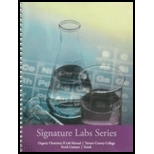
(a)
Interpretation:
The accomplishment of given synthetic transformation is to be shown.
Concept introduction:
Amides are the acid derivatives that are less reactive and are synthesized by the reaction of an acid chloride with an amine. Amides are produced when esters react with
(b)
Interpretation:
The accomplishment of given synthetic transformation is to be shown.
Concept introduction:
Amides are the acid derivatives that are less reactive and are synthesized by the reaction of an acid chloride with an amine. Amides are produced when esters react with amines and ammonia. It is also produced by the partial hydrolysis of nitriles.
(c)
Interpretation:
The accomplishment of given synthetic transformation is to be shown.
Concept introduction:
Amides are the acid derivatives that are less reactive and are synthesized by the reaction of an acid chloride with an amine. Amides are produced when esters react with amines and ammonia. It is also produced by the partial hydrolysis of nitriles.
(d)
Interpretation:
The accomplishment of given synthetic transformation is to be shown.
Concept introduction:
Amides are the acid derivatives that are less reactive and are synthesized by the reaction of an acid chloride with an amine. Amides are produced when esters react with amines and ammonia. It is also produced by the partial hydrolysis of nitriles.
Want to see the full answer?
Check out a sample textbook solution
Chapter 21 Solutions
ORGANIC CHEMISTRY II LAB MANUAL>CUSTOM<
- How to draw the mechanism for this reaction?arrow_forward> H₂C=C-CH2-CH3 B. H₂O Pt C. + H2 + H₂O H D. 16. Give the IUPAC name for each of the following: B. Cl Cl c. Cl Cl 17. Draw the line-angle formula for each of the following compounds: 1. phenol 2. 1,3-dichlorobenzene 3. 4-ethyltoluene < Previous Submit Assignment Next ▸arrow_forwardno Ai walkthroughsarrow_forward
- The answer is shown. What is the reaction mechanism to arrive at the answer?arrow_forwardno Ai walkthroughsarrow_forwardConsider the following nucleophilic substitution reaction. The compound listed above the arrow is the solvent for the reaction. If nothing is listed over the arrow, then the nucleophile is also the solvent for the reaction. Part 1 of 2 Br CH,CN + I¯ What is the correct mechanism for the reaction? Select the single best answer. @SN2 ○ SN 1 Part: 1/2 Part 2 of 2 Draw the products for the reaction. Include both the major organic product and the inorganic product. If more than one stereoisomer is possible, draw only one stereoisomer. Include stereochemistry where relevant. Click and drag to start drawing a structure. X હૈarrow_forward
 Organic Chemistry: A Guided InquiryChemistryISBN:9780618974122Author:Andrei StraumanisPublisher:Cengage Learning
Organic Chemistry: A Guided InquiryChemistryISBN:9780618974122Author:Andrei StraumanisPublisher:Cengage Learning Chemistry for Today: General, Organic, and Bioche...ChemistryISBN:9781305960060Author:Spencer L. Seager, Michael R. Slabaugh, Maren S. HansenPublisher:Cengage Learning
Chemistry for Today: General, Organic, and Bioche...ChemistryISBN:9781305960060Author:Spencer L. Seager, Michael R. Slabaugh, Maren S. HansenPublisher:Cengage Learning Organic ChemistryChemistryISBN:9781305580350Author:William H. Brown, Brent L. Iverson, Eric Anslyn, Christopher S. FootePublisher:Cengage Learning
Organic ChemistryChemistryISBN:9781305580350Author:William H. Brown, Brent L. Iverson, Eric Anslyn, Christopher S. FootePublisher:Cengage Learning


